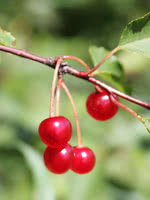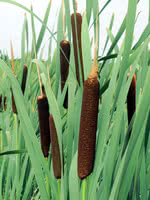Mon-Fri 9am - 5pm Mountain time
Pin Cherry vs Common Cattail
Prunus pensylvanica
Typha latifolia
NOT AVAILABLE THIS SEASON - MIGHT RETURN
CUSTOM GROW
Pin Cherry is a small tree that produces clusters of white blossoms in spring followed by bright red berries that ripen through the summer. The attractive red color of the leaves in the fall is an added bonus.
The fruit is quite sour when eaten fresh but is excellent when cooked into jam or jelly. Birds love the berries and will be attracted to your property.
Cattail is found all across North America, growing next to water. Like other waterside plants, Cattail provides erosion control and forage for animals.
It is suitable for land reclamation. Cattail is able to tolerate cold weather and occasional flooding.

